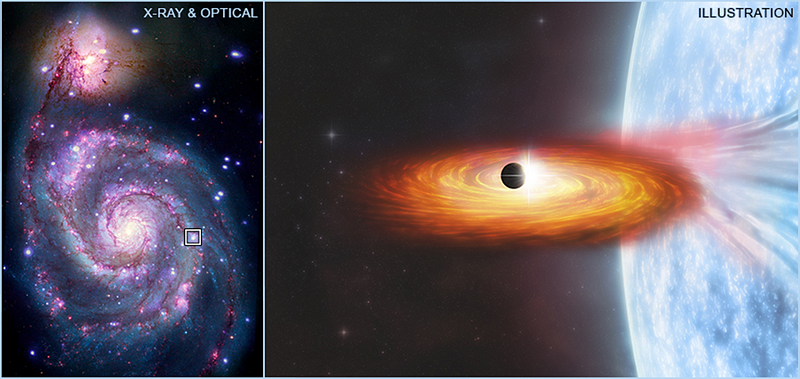Discovering Exoplanets Beyond the Milky Way: A New Frontier
Written on
Chapter 1: A New Era in Exoplanet Discovery
Recent advancements in astronomy suggest that researchers might have identified the first-ever planet candidate located outside the Milky Way galaxy. Observations of the M51 galaxy, also known as the Whirlpool Galaxy, have sparked excitement in the scientific community as this could lead to a significant leap in our understanding of distant worlds.

According to the NASA Exoplanet Archive, there are currently 4,566 confirmed exoplanets, a number that continues to grow as our techniques for observing these distant worlds improve. Earlier this year, I mentioned the ‘MAROON-X’ instrument, which has provided precise measurements revealing remarkable details of rocky exoplanets.
In addition to recent findings, there have been intriguing discoveries, including the first planet known to orbit three stars and an Earth-sized exoplanet acquiring a secondary atmosphere through volcanic activity. However, nearly all previous discoveries have been within 3,000 light-years of Earth, confined to our galaxy.
The latest observations, however, may mark a significant breakthrough. Using NASA’s Chandra X-ray Observatory, astronomers have potentially located evidence of an exoplanet in the M51 galaxy, a milestone that could broaden our search for planets beyond our galactic neighborhood.
Section 1.1: Methodology of Discovery
The endeavor to find other worlds is expanding into new territories, aiming to identify planet candidates using X-ray wavelengths—a strategy that allows for the exploration of other galaxies.
Rosanne Di Stefano, the lead researcher, stated, "We are trying to open up a whole new arena for finding other worlds by searching for planet candidates at X-ray wavelengths."

The exoplanet in question is approximately 28 million light-years away from Earth, a distance that is thousands of times greater than that of any exoplanets previously discovered. This finding lays the groundwork for further investigations into other galaxies, utilizing X-ray wavelengths to locate distant exoplanets.
Conventional methods for detecting exoplanets typically rely on the transit technique, where a planet passing in front of its star results in a slight decrease in brightness. Ground-based and space-based telescopes have successfully employed this technique, leading to the discovery of thousands of exoplanets.
In this video, discover how the James Webb Space Telescope identified a planet that may harbor city-like lights, suggesting the potential for a new Earth.
Section 1.2: The Innovative Approach
For this recent discovery, researchers focused on fluctuations in X-ray brightness from X-ray bright binaries. These systems typically consist of a neutron star or black hole siphoning gas from a nearby companion star.

As the gas heats up, it emits X-rays. When a planet transits through this region, it blocks the X-rays, making it easier to detect. This method allows for the identification of exoplanets much farther away than traditional optical transit studies.
The research team successfully detected the exoplanet candidate in a binary system referred to as M51-ULS-1, located in the M51 galaxy. This binary system is characterized by a black hole or neutron star orbiting a companion star approximately 20 times the mass of our Sun. The observed X-ray transit lasted about three hours, during which the X-ray emissions ceased.
Watch this video to learn about Webb's groundbreaking discovery of its first "Earth-like" exoplanet and why it’s a remarkable find.
Chapter 2: Challenges Ahead
While the study presents exciting possibilities, further verification is required to confirm the existence of this extragalactic planet. The large orbit of the candidate implies that it will not transit again for approximately 70 years, delaying confirmation efforts. Researchers have ruled out the interference of gas clouds causing the observed X-ray dips.
The study's authors propose that if the exoplanet exists, it likely experienced a turbulent history, considering the supernova event that formed the neutron star or black hole. Moreover, the future of the exoplanet may also be unstable, given the potential for the companion star to explode.
The research team examined X-ray transits across three galaxies beyond the Milky Way, analyzing 55 systems in M51, 64 systems in Messier 101, and 119 systems in Messier 104. They plan to delve into the archives of both Chandra and XMM-Newton to identify additional exoplanet candidates in other galaxies.

Stay updated on the latest discoveries and insights in astronomy—join my mailing list!